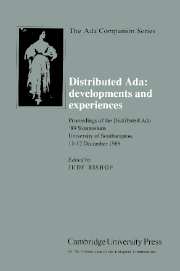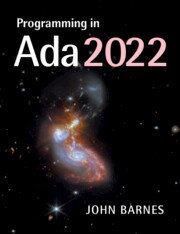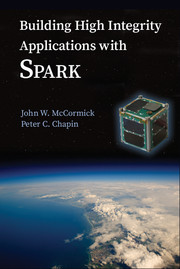Selecting an Ada Compilation System
In 1983 there were just three compilers that implemented the full Ada language. By 1989, there were 171 base compilers and 70 derived compilers supplied by about fifty independent vendors. The proliferation of compilation systems spawned the need for a book such as this, which aims to guide Ada users in effectively formulating their requirements for a software project, evaluating those requirements, and selecting an Ada compilation system based on the evaluation.
For the purposes of this guidebook the compilation system is taken to be those tools that are an integral part of the Ada system: the editor, compiler, various listing tools, linker, target loader, and debugger. It begins in Part I with a number of chapters discussing applications, such as size or interfacing. Part II consists of questions and answers specifically chosen to yield significant information about choosing a compilation system. The last part contains a number of chapters on various sources of information. The conclusions found in this book should prove essential reading for anyone considering adoption of the Ada programming language and will be of value to the entire Ada community.
Product details
February 1991Hardback
9780521404983
183 pages
235 × 157 × 15 mm
0.382kg
Unavailable - out of print December 2010
Table of Contents
- Foreword
- Preface
- Introduction
- Part I. Application Requirements:
- 1. Introduction to Part I
- 2. Long lifetime
- 3. Large program size
- 4. Portability
- 5. Compile-time operational qualities
- 6. Software interfacing
- 7. Run-time operational qualities
- 8. Concurrency
- 9. Security
- 10. Time constraints
- 11. Host-target development
- 12. Embedded application systems
- 13. Hardware interfacing
- 14. Exploitation of target and computational capacity
- 15. Multiprocessing
- 16. Use of high level tools
- 17. Training
- Part II. Questionnaires:
- 18. Introduction to Part II
- 19. Compilation system facilities
- 20. Quality and documentation
- 21. Performance and capacity
- 22. Run-time implementation concerns
- 23. Architectural considerations
- 24. Man machine interface
- 25. Language-related characteristics
- 26. Tool-building activities
- 27. Contractual Matters
- Part III. Sources of Information:
- 28. Introduction to Part III
- 29. Benchmarks
- 30. Evaluation systems
- 31. Published literature
- Glossary
- References.






